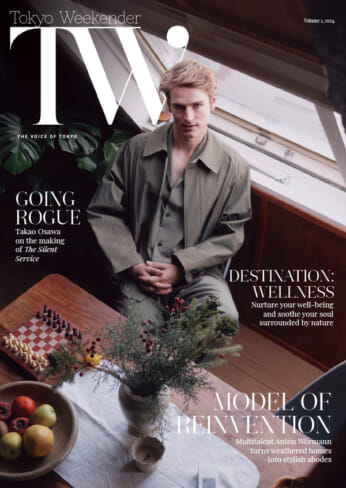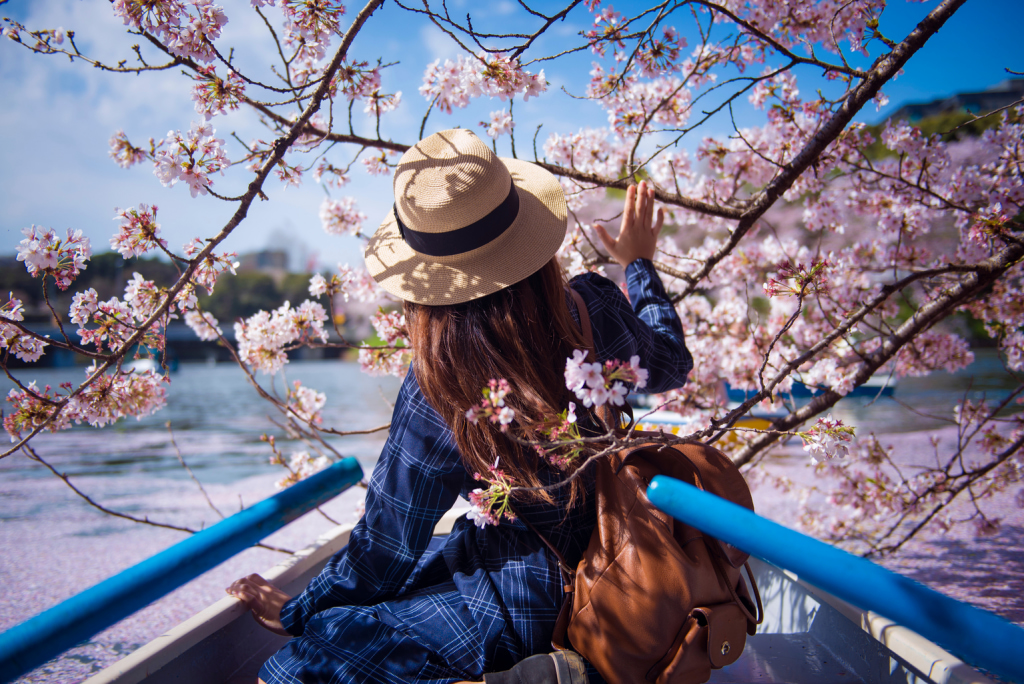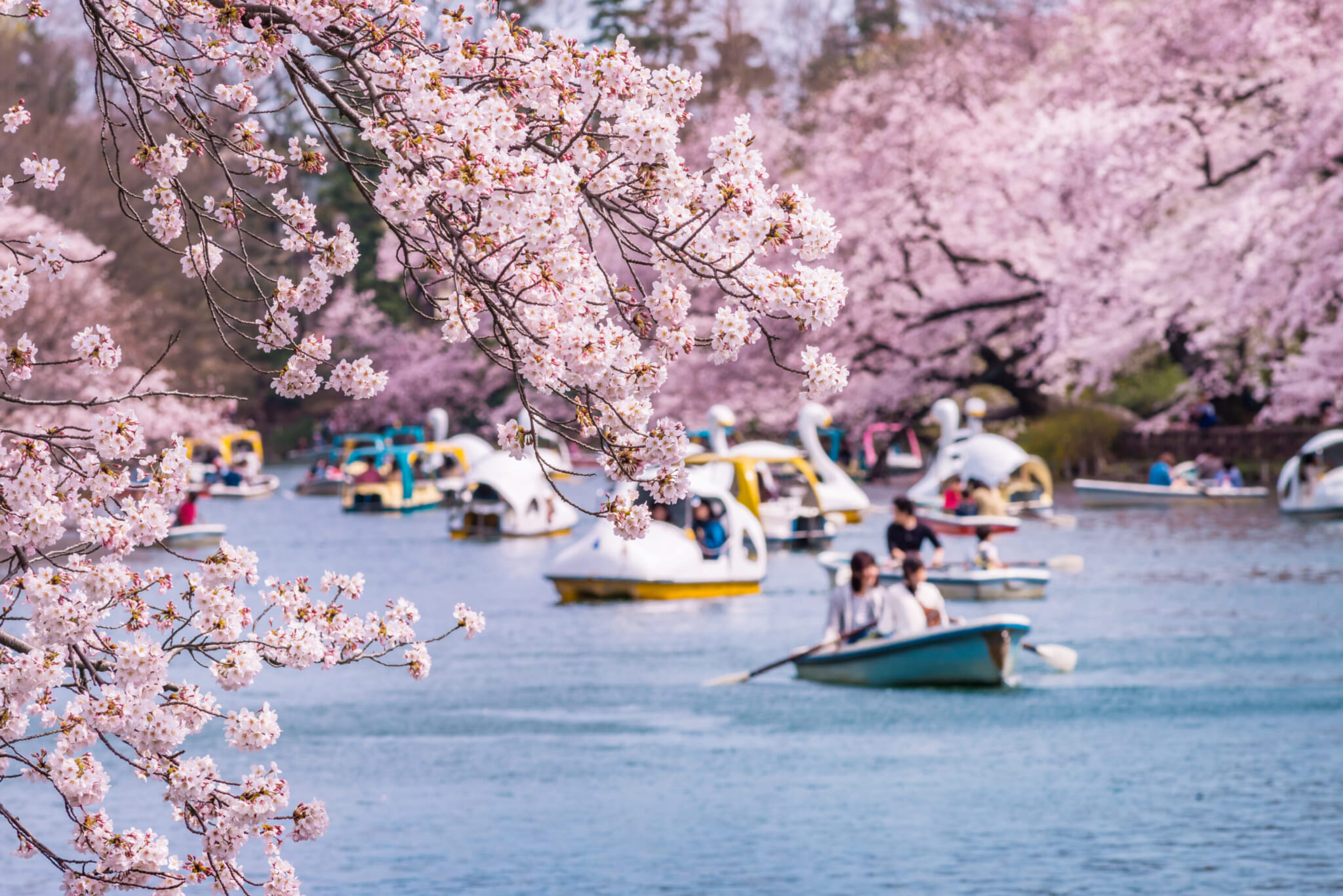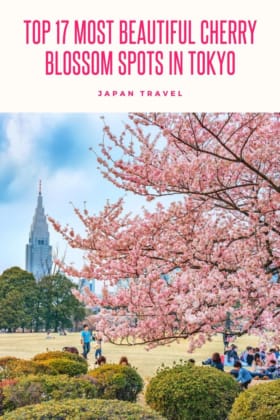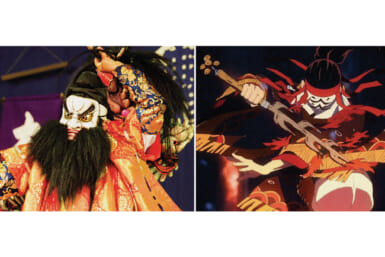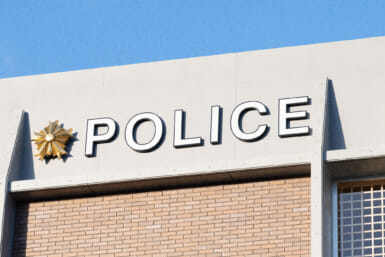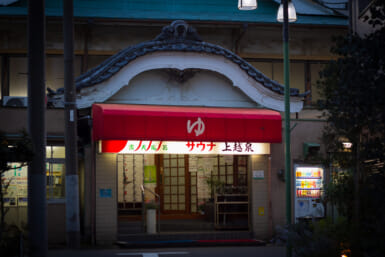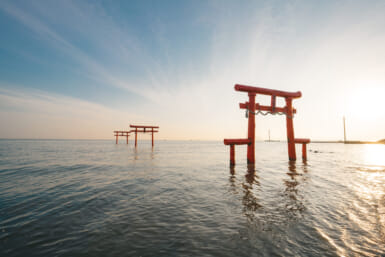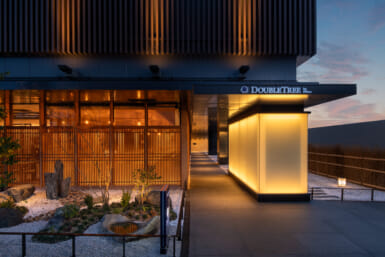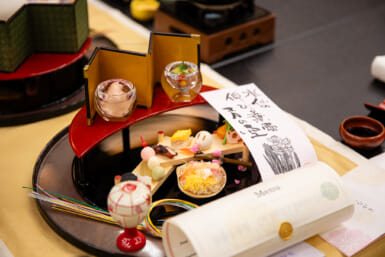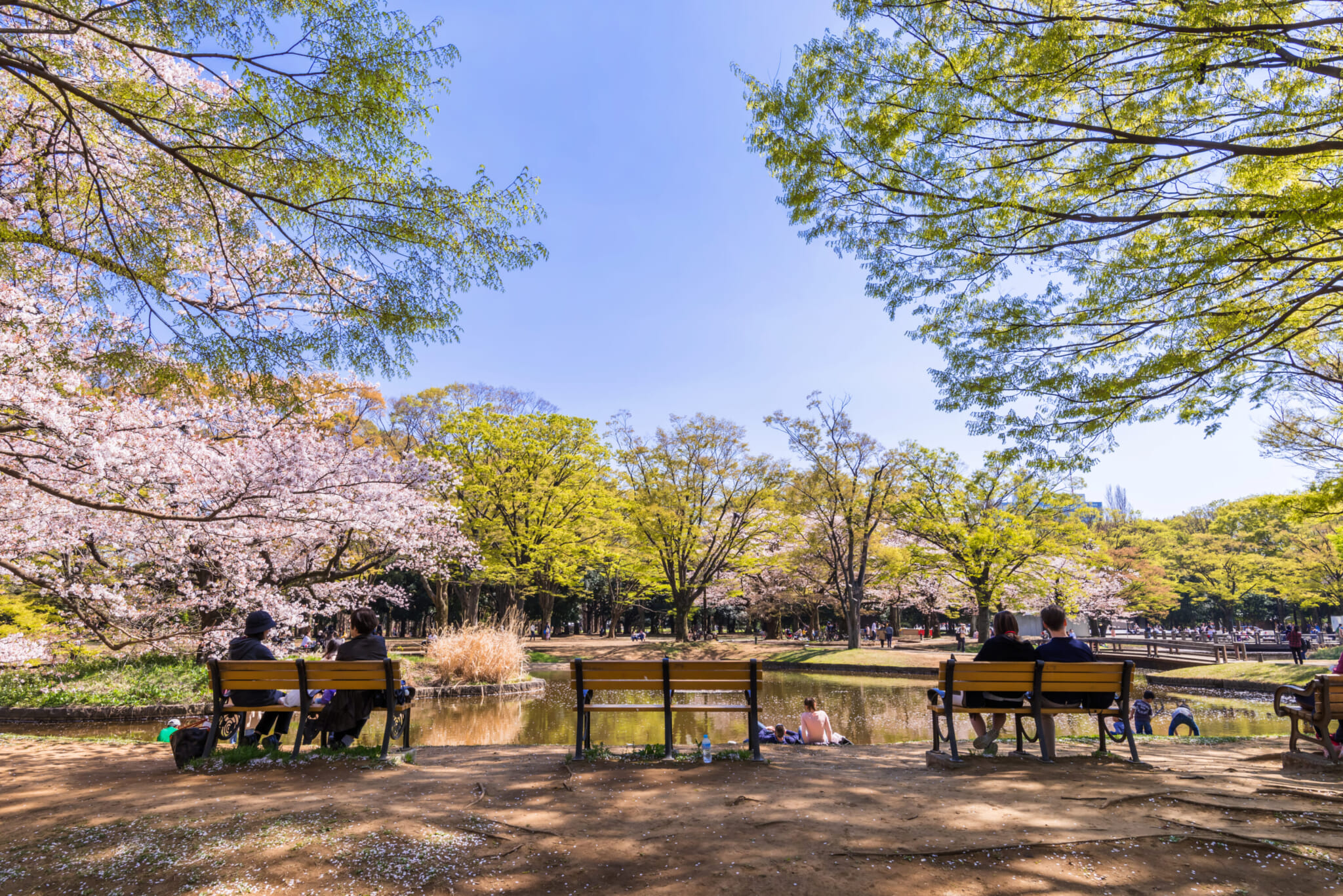
Photo by picture cells via Shutterstock
1. Yoyogi Park
Easily one of the biggest parks in downtown Tokyo, Yoyogi is a one-stop destination for those looking for a traditional hanami (read: “getting slightly inebriated under pink trees”).
We’ve also got a complete guide to Yoyogi Park.
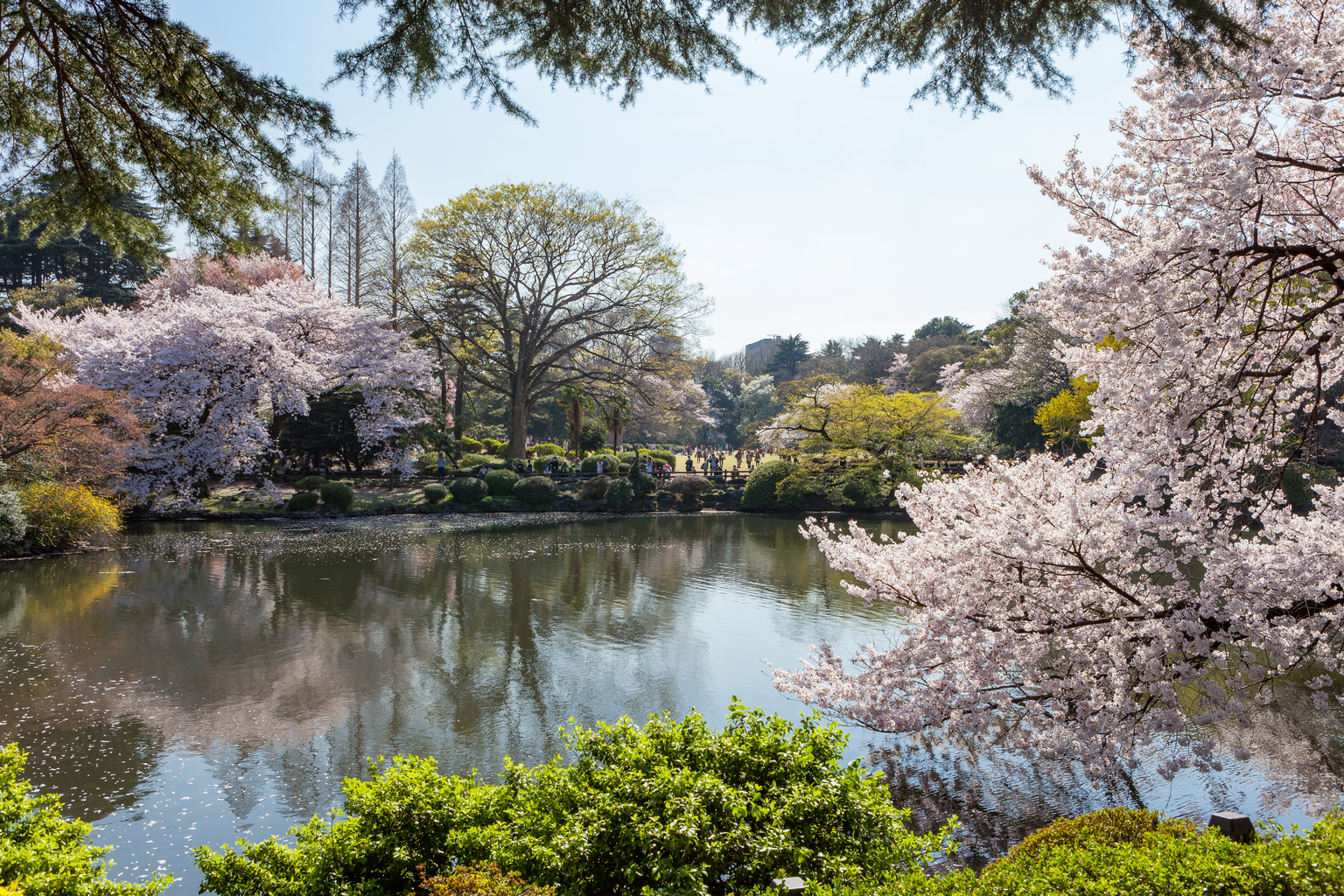
2. Shinjuku Gyoen
One hundred and forty acres divided into three distinct park styles (Japanese, French, and English, with a bonus “Imperial” and “Greenhouse” area) makeup Shinjuku Gyoen. It’s certainly one of the more formal parks in the city, with its well-kept appearance, tidy ponds and neatly knit-together flower fields. Be sure to include it on your list of places to check out when plotting your park-hopping course.
For adventurous hearts, there are plenty of other attractions in the area. See our Shinjuku and Sendagaya area guides.
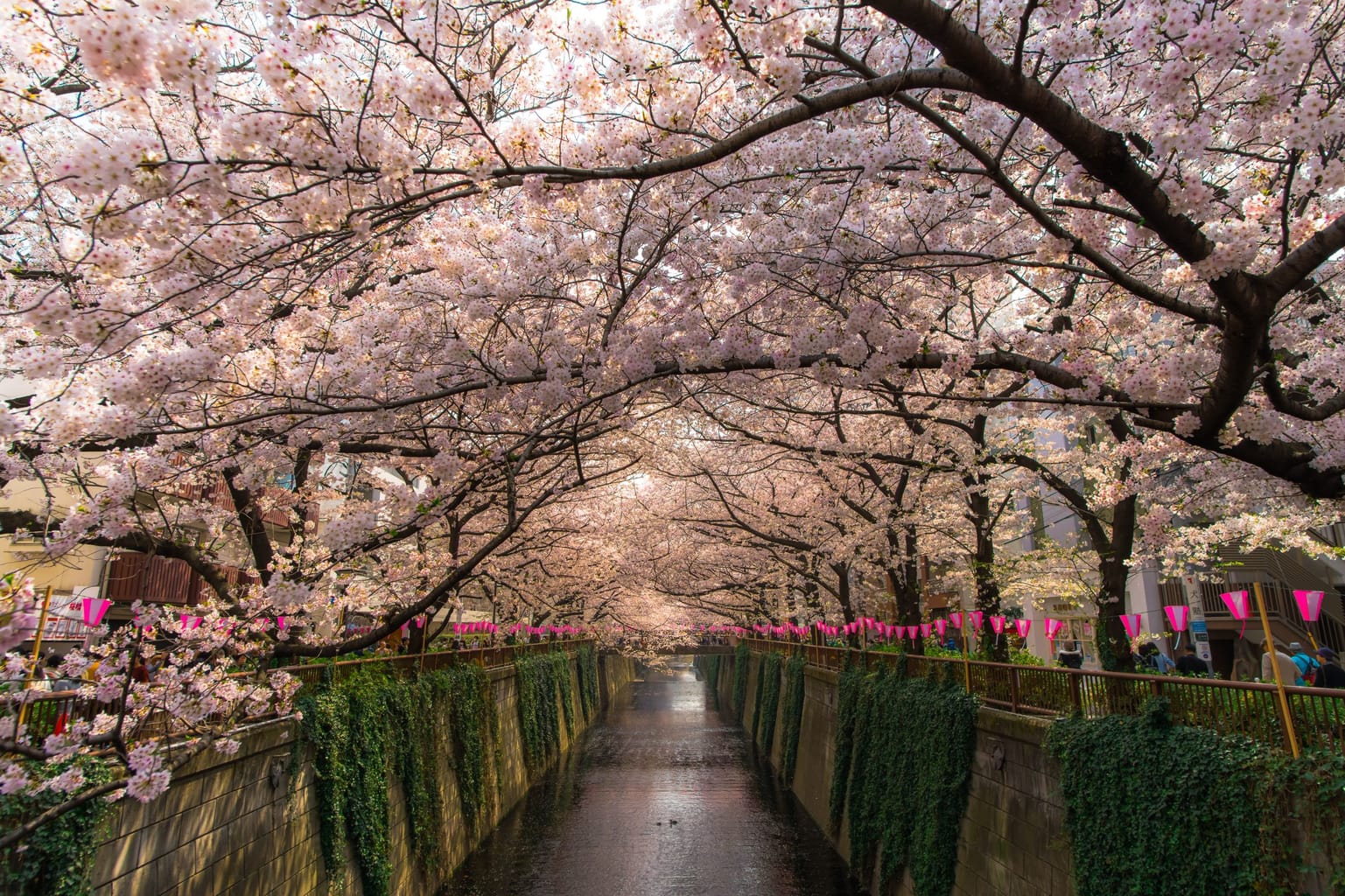
3. Nakameguro
Nakameguro is neither a garden nor a park, but rather a neighborhood famous for being the home to one of the more prominent canals of Tokyo. Lined with low-hanging cherry blossom trees and decorated with bright pink lanterns during the spring season, Nakameguro is great for those who want to take the time to eat delicious food while taking in the sights. Cross over the bridges for a better look down the canal, and to capture the coveted “river sakura” image.
Meguro Station has a lot more to offer. Click here for our complete area guide.
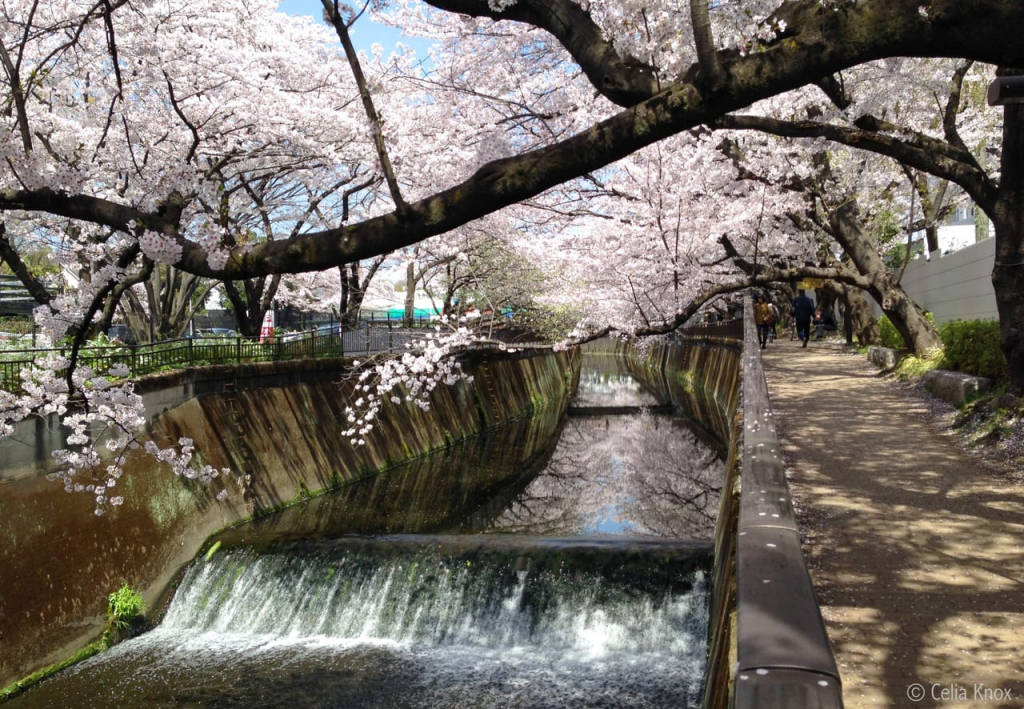
Photo by Celia Knox
4. Sengawa River
One of Tokyo’s best-kept secrets, the canal behind Toho Studios is like Nakameguro minus the crowds. The Sengawa River is located only a few blocks away from Seijo, Setagaya. The river is 20.9 kilometers long and originates from Chofu city, one of Tokyo’s 23 wards, west of Setagaya. The mirror reflection of the sakura in the water against the blue sky is certainly divine. Plus, it is quiet and there is plenty of space to walk at your own pace. The effort it takes to get here is well rewarded.
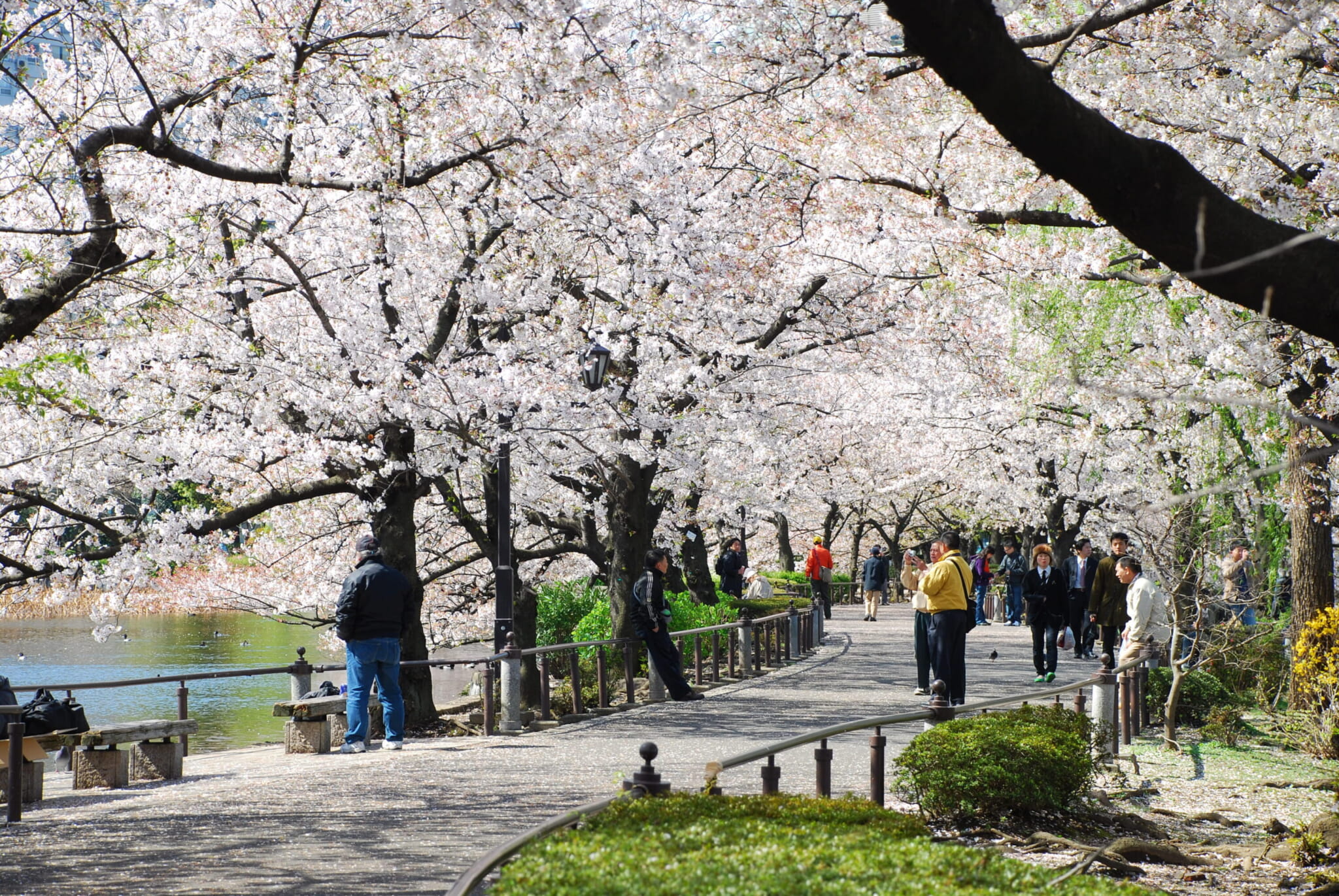
Photo by bluehand via Shutterstock
5. Ueno Park
Ueno Park is arguably the most popular park in Tokyo and features more than 800 trees growing across its broad expanse. An official “Sakura Matsuri” spanning a week or two, depending on the length of the cherry blossom season with your typical Japanese festival food stalls and live shows, is held here.
Our most recent Ueno area guide suggests the perfect recipe for a perfect day.
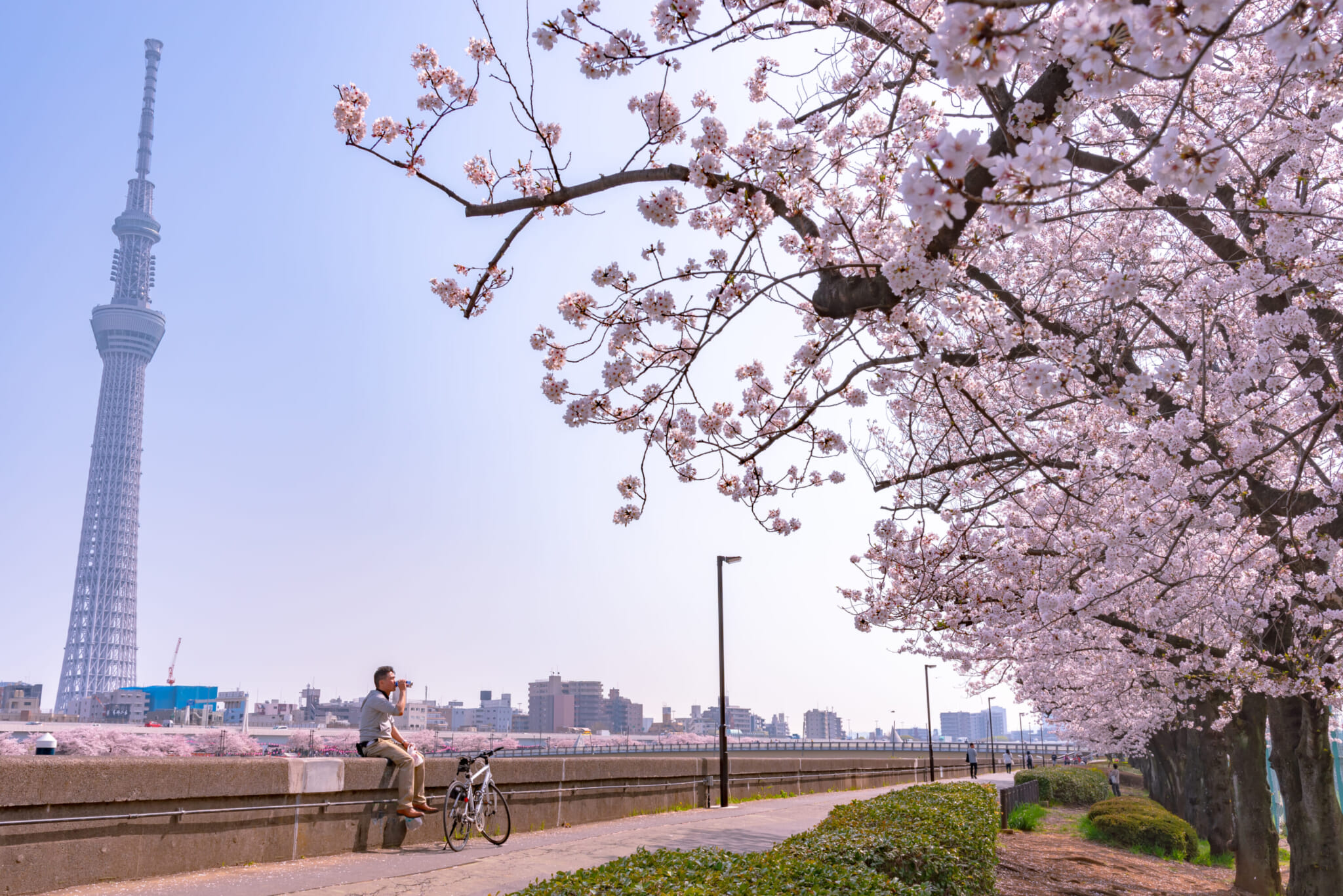
Photo by Shawn.ccf via Shutterstock
6. Sumida Park
Sumida Park is split by Sumida River. The left bank is very open and a great place to stroll, while the right one is smaller and more intimate. Both sides are great for walking and for taking photographs of the cherry blossoms with Tokyo Sky Tree in the background. There are also water buses to enjoy the sakura from the river. The cherry blossom trees will also be lit during the night for a beautiful night stroll hanami.
For even more things to do in the area, check out our Asakusa area guide.
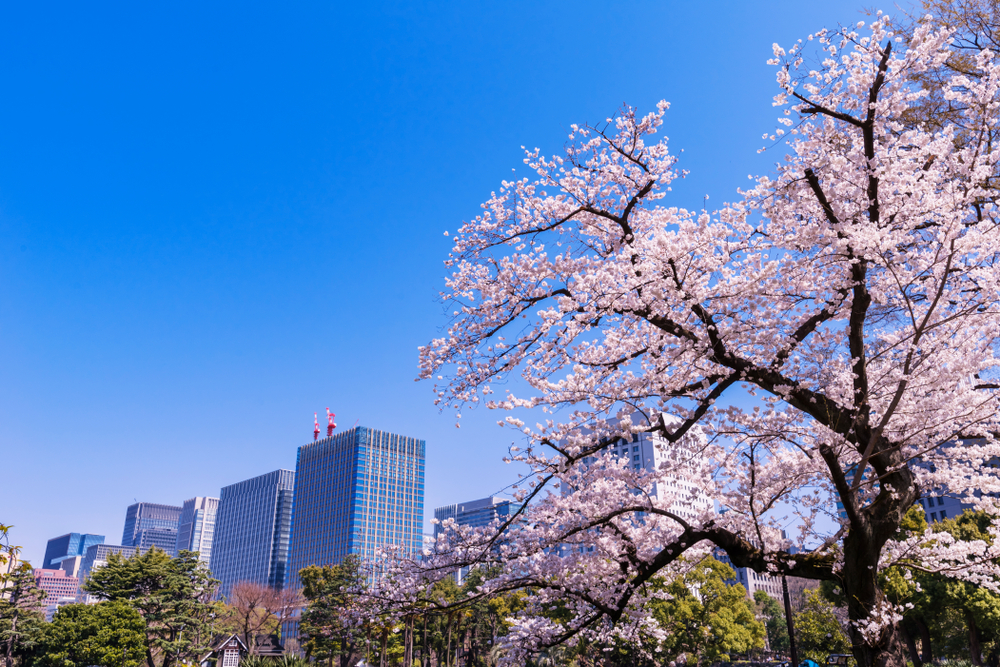
7. Hibiya Park
Hibiya is the epitome of a downtown park in Tokyo. It’s got markets, concerts, ponds, the city’s oldest ginkgo tree, protected flower gardens, “gothic” statues, restaurants, fountains, festivals and some of the oldest hotels surrounding it. Go during the day and you’ll see a park full of suited-and-tied salarymen. Go on the weekend and you’ll see an oddball mix of the whole population of Tokyo. A stone’s throw from the Imperial Palace, this historically important park is certainly one you should have on your hanami list this year.
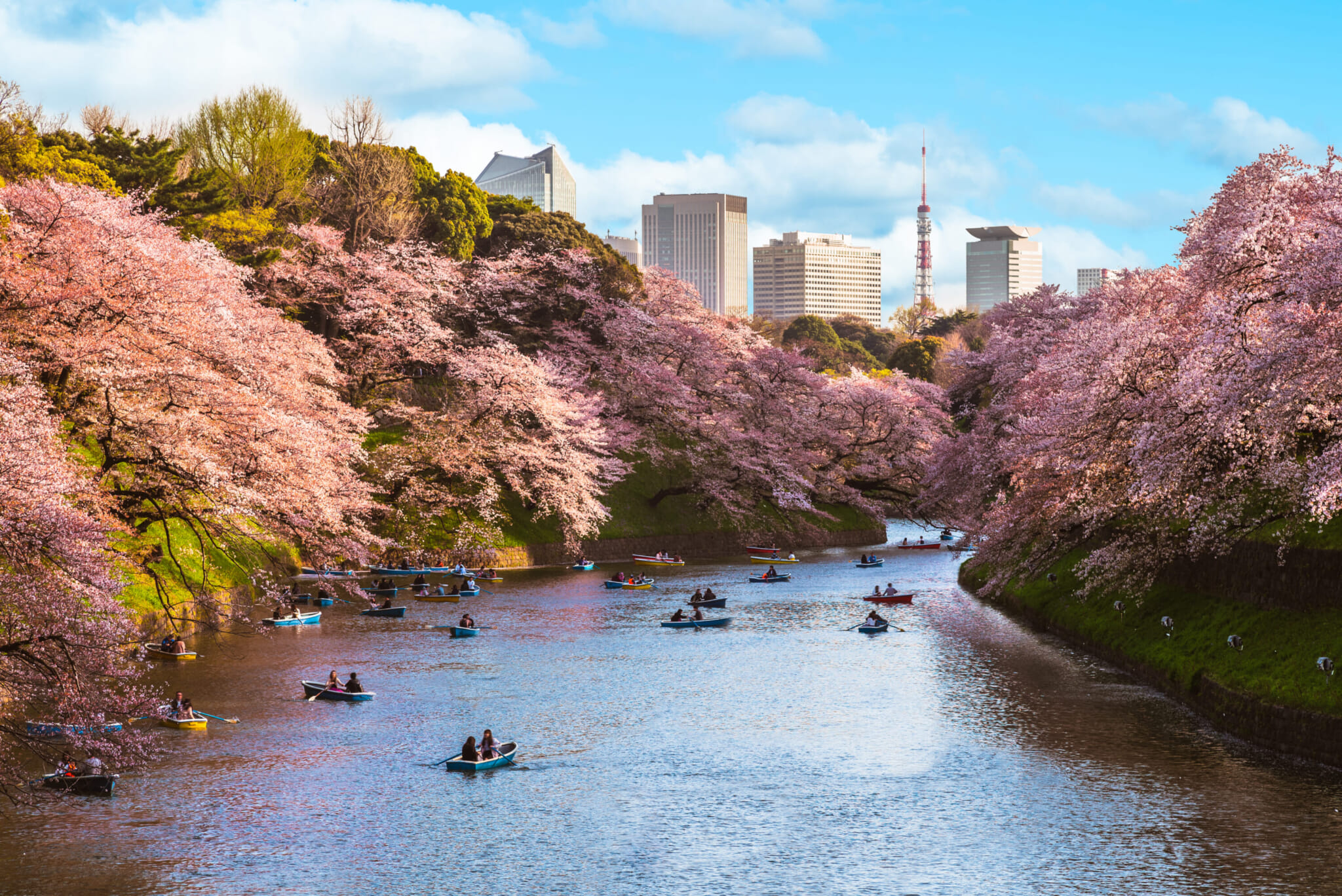
8. Chidorigafuchi and the Imperial Gardens
A large, neat, smoothly sloping hill covered in a blanket of pink blossoms leads down into the moat that surrounds the Chidorigafuchi Park at the Imperial Gardens. The river is wide and still, welcoming boaters with its glittering surface a romantic view of the petals drifting in the wind. Many other seasonal flowers festoon the gardens and runners often use the surrounding path as a part of their routine just for the view. It’s easy to understand why. This is the place to go if you want to row a boat under the cherry trees.
For even more things to do in the Chiyoda area, check out our Chiyoda area guide and our Bancho area guide.
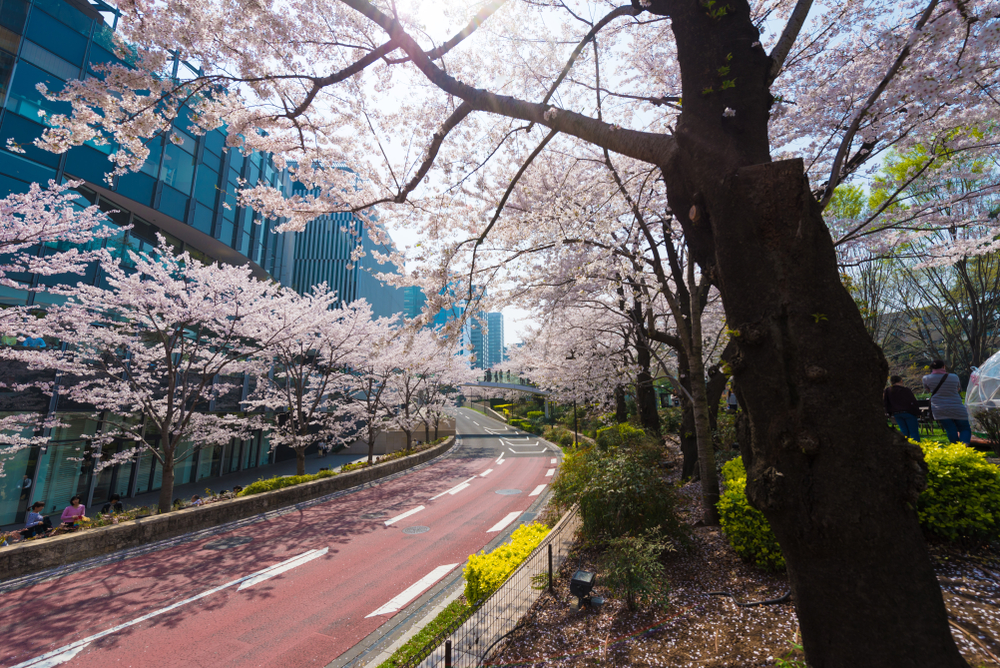
9. Roppongi Midtown
Roppongi is the place to go for a classic “Tokyo night out” date, with tons of museums, places to eat, cinemas and a variety of flowering cherry trees everywhere you look. Head to Midtown for terrace dining areas, illumination and sidewalks lined with cherry blossoms. Nearby, Ark Hills is a winding street with stunning night views of popcorn-style cherry trees. An expansive park behind ANA Intercontinental Hotel is yet another place to see some blossoms and lie back on a sloping lawn in the middle of the concrete jungle.
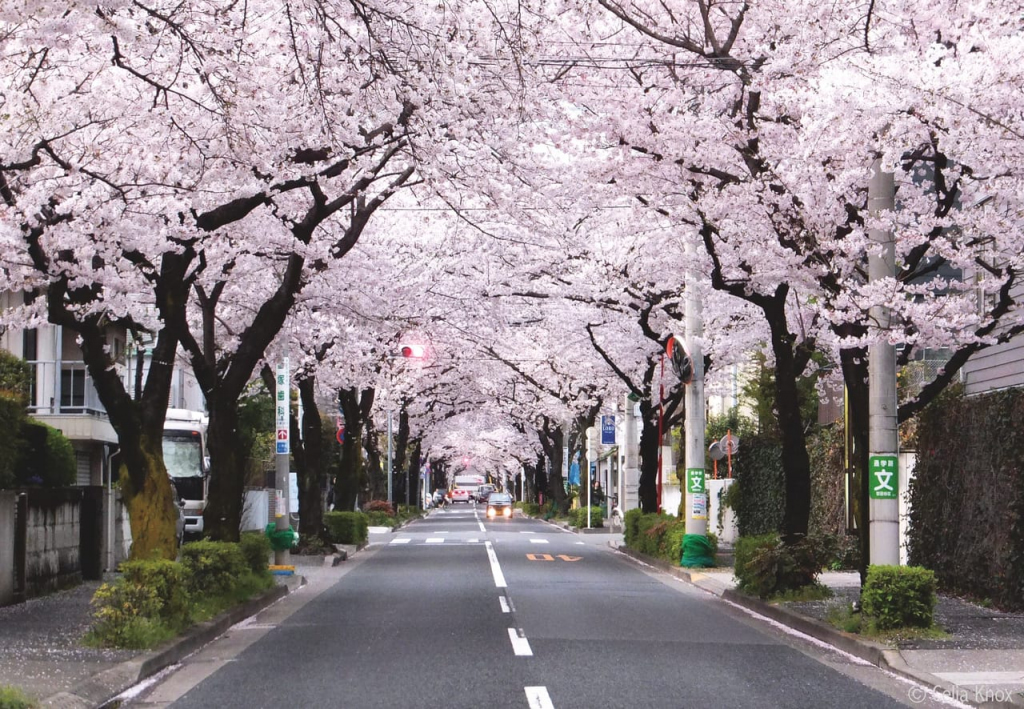
Photo by Celia Knox
10. Kinuta Park and the Yoga Sakura Tunnel
Deep in the heart of Setagaya ward is Kinuta Park, situated beside the Setagaya Waste Disposal Plant (not the first place you’d think for a giant park to be). The expansive park is home to a number of sports fields, a bird sanctuary and the Setagaya Art Museum, as well as beautiful flower and fruit gardens. It’s a bit far to walk to from the nearest station (about 20 minutes, in fact), so get ready to stretch your legs, or rent a bike, if you’re a member of the Setagaya Ward Bike Rental community (Japanese site).
For something away from the crowds, this residential area in Setagaya might be just what you’re after. A breathtaking cherry blossom tunnel stretches for about one kilometer down an unnamed street, about halfway between Yoga Station and Kinuta Park. This is the place to go if you want to have the cherry blossoms almost all to yourself.
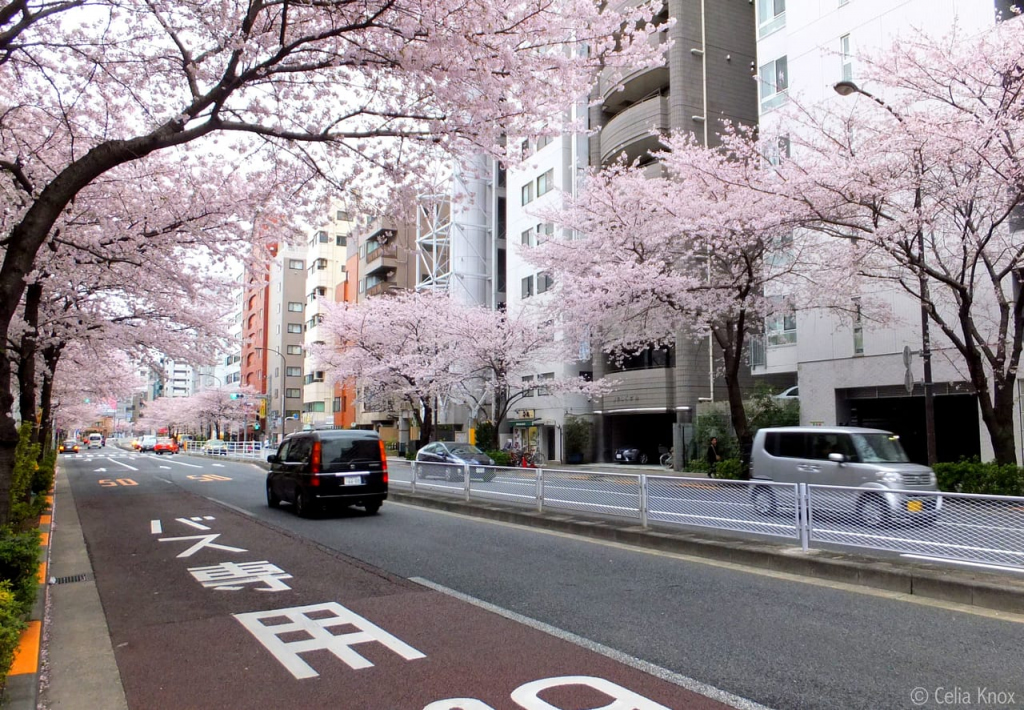
Photo by Celia Knox
11. Meiji-Dori
From Shibuya Station’s southernmost exit to Hiroo Park, a 2-kilometer section of Meiji-Dori is lined with weeping cherries and somei yoshino cherries. Despite being one of the main roads in Tokyo, it’s a relatively quiet area. This is the place to go if you want to stroll leisurely beneath the cherry trees.
For more things to do in the area, check out our Ebisu area guide.
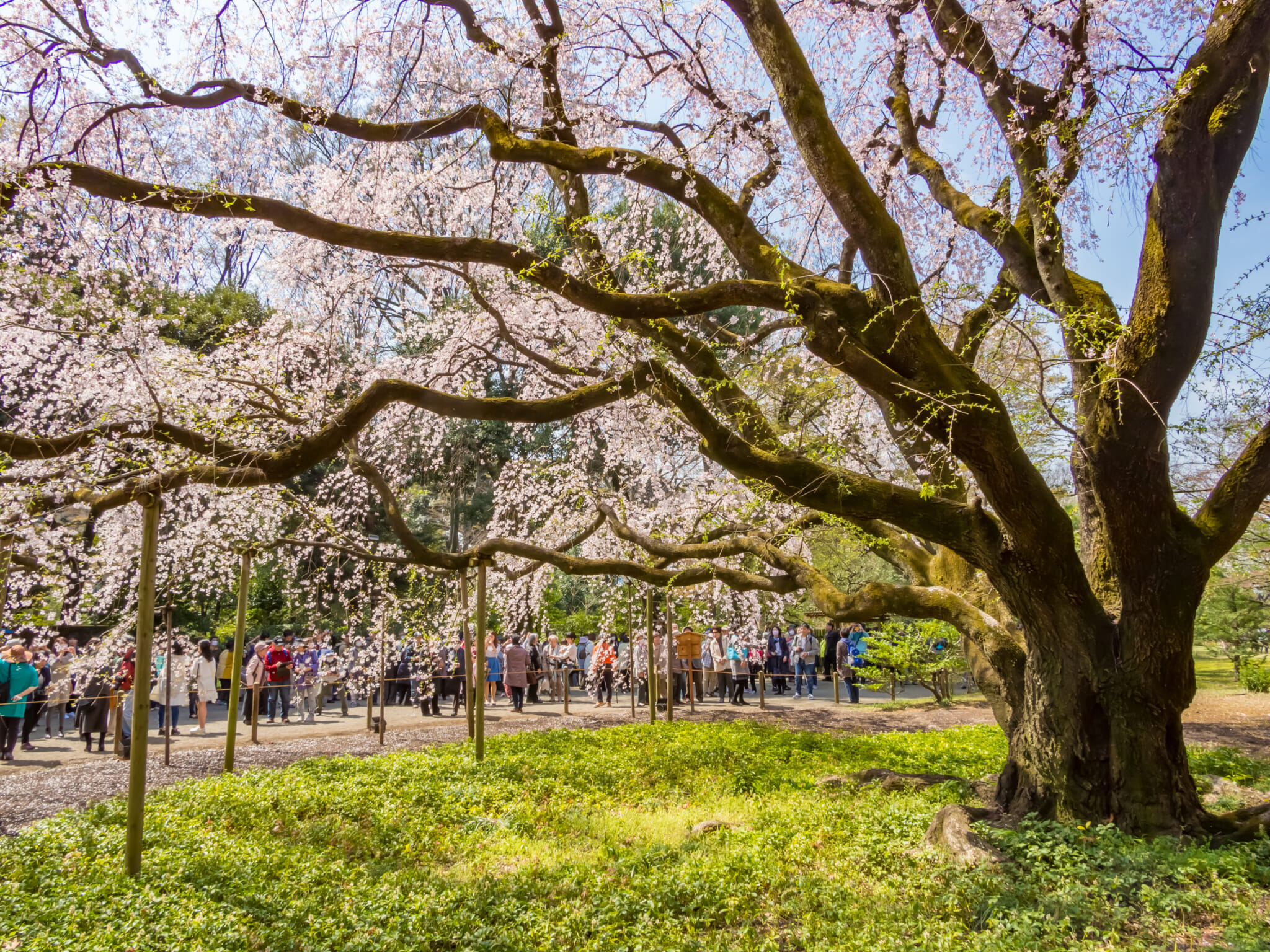
Photo by Takashi Images via Shutterstock
12. Rikugien Park
Rikugien is one of Tokyo’s most popular landscape gardens, having existed since the Edo period. Giant weeping cherries are the main attraction in spring and are particularly beautiful in the evening when lit up. One of the older parks on the list, Rikugien has been a go-to park since 1695 in Tokyo. Its biggest draws are the evening illumination of the famed cherry blossom trees, from weeping sakura to “fluffy” hybrids. The still waters and ponds promise stunning reflections and mirror effects. Rikugien Park is a favorite for photographers, so expect lots of elbows and watchdogs guarding prime spots to take their own award-winning photos. If the illumination doesn’t do much for you, daytime is always much quieter.
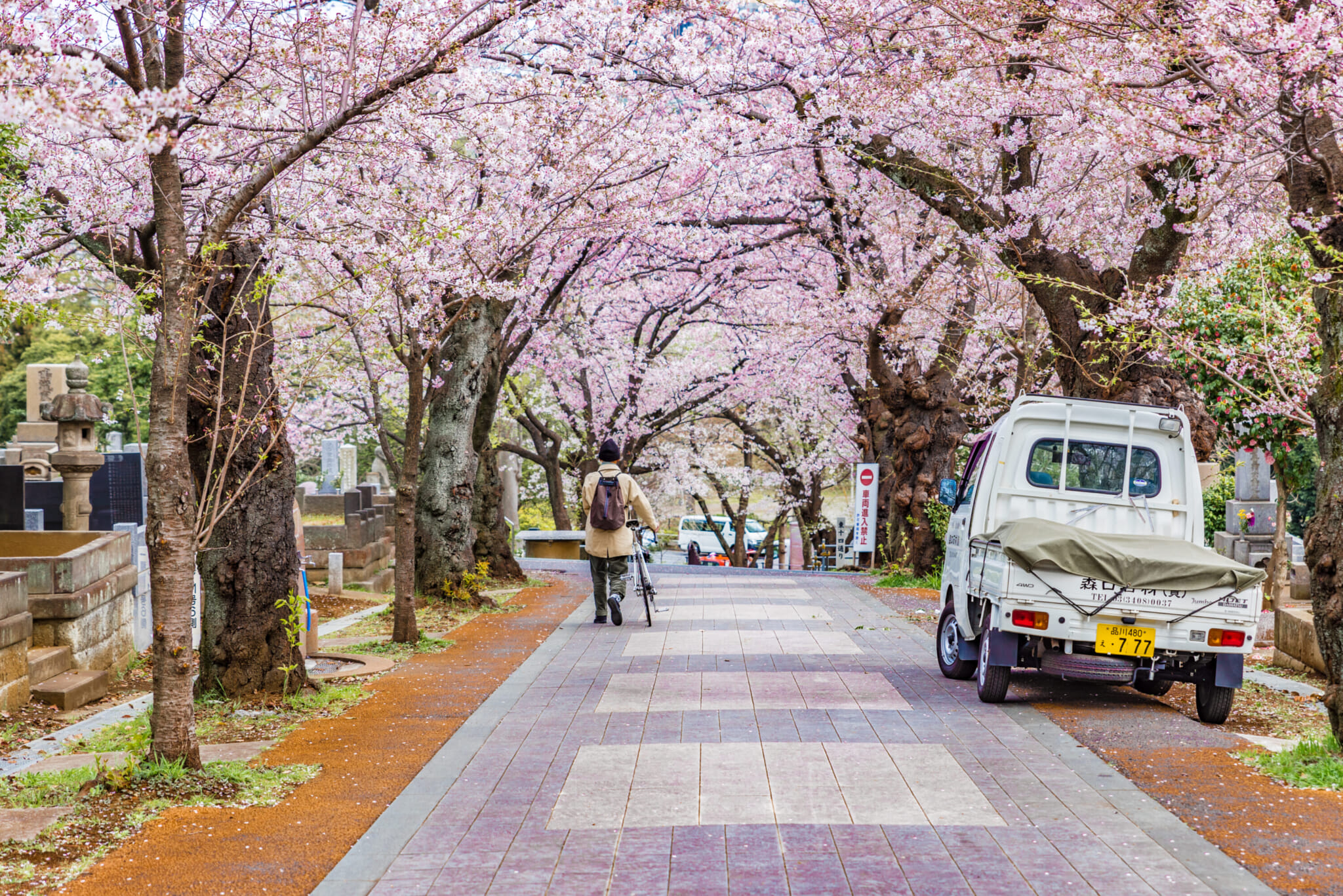
Photo by Takashi Images via Shutterstock
13. Aoyama Cemetery
Cemeteries and pretty pink flowers don’t seem like a match made in heaven, but Aoyama Cemetery proves otherwise. Situated somewhere between Akasaka and Roppongi, the beautiful site stretches over a few geographically and at a higher point, so you’ve got a view with your hanami, too. If you’re looking for a quiet stroll under the blossoms, there aren’t many quieter places in all of Tokyo.
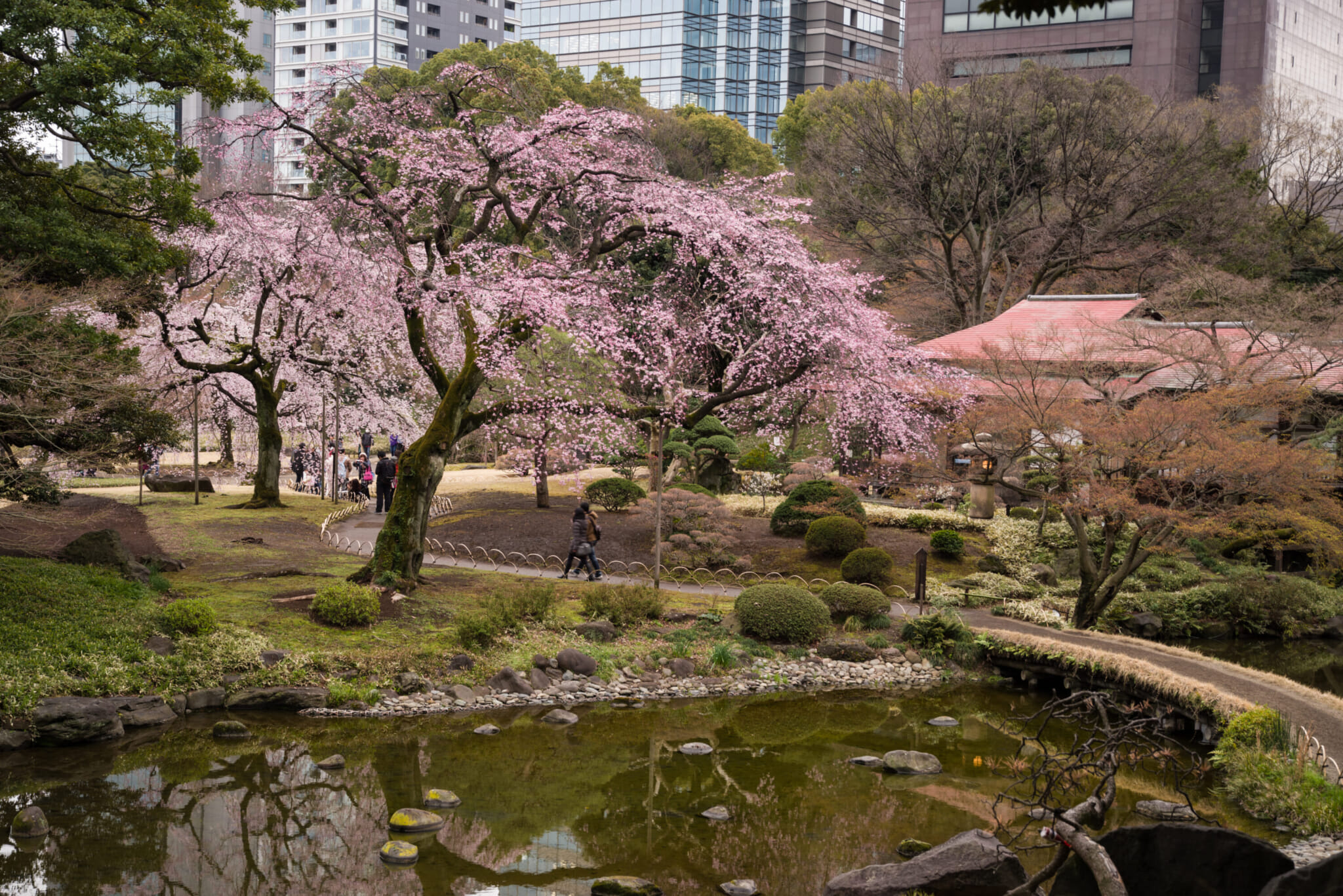
14. Koishikawa Korakuen
The tranquil Koishikawa Korakuen transports you back to Edo period when stroll gardens were reserved for the nobles. The garden also has Chinese influences including a reproduction of the Seiko Lake in China. The name of the garden, Korakuen, was inspired from a Chinese text in Hachuen’s Gakuyoroki. Mitsukuni, the second clan leader of the Tokugawa family was encouraged to enjoy pleasure after using his power to help his people. Thus, the name “Korakuen” was chosen as it is defined as a “garden for enjoying pleasure later.” This is the place to go to see cherry blossoms from inside a tea house.

Photo by picture cells via Shutterstock
15. Koganei Park
Often overlooked, despite being the second largest park in all of Tokyo, Koganei Park is home to 1,700 sakura trees has and lots of space to roam around. With spots to grill barbecues safely and plenty of bicycle-only tracks, this is one of the most vibrant and lively parks to explore. We recommend covering as much ground as possible – there is an open-air museum, shrines, temples, fountains and lots of hidden groves to find peace, quiet and something more than just a day at the park.
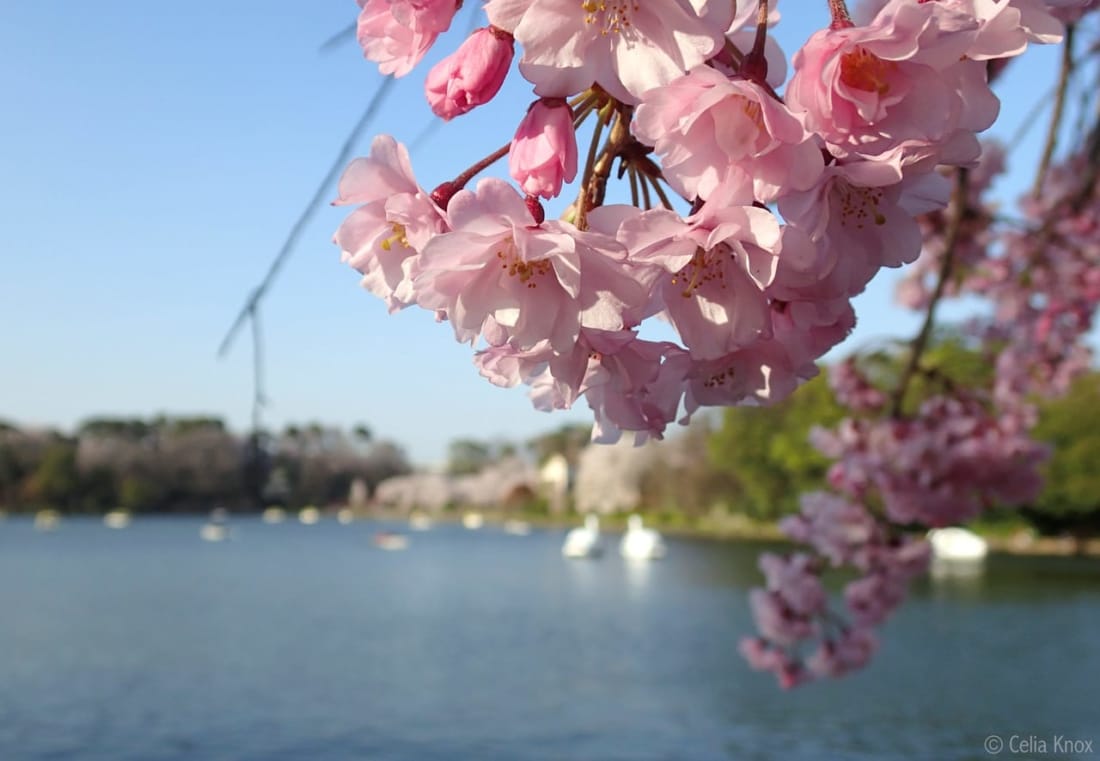
Photo by Celia Knox
16. Senzoku Pond
Packed with young families, Senzoku Pond is a vibrant place to hang out. Rowboats and paddleboats are available to rent and a small festival offers Japanese street food. This is the place to go if you want to picnic by the water.
17. Inokashira Park
Inokashira Park in Mitaka is a beautiful location for sky-high cherry blossom trees, which tower over picnic areas nestled along the riverbanks of Inokashira Pond. A dreamy place for a date, hanami party or family outing, Inokashira Park has a great deal to offer visitors. The beloved Ghibli Museum is on the far southwest corner of the park, across the sports fields and play areas. Near the center of the park is a small zoo, with delightful, rustic restaurants on the slopes just around the pond shrouded in bamboo. Rent small canoes or swan boats on the cheap in the afternoon, enjoy dinner outside on a restaurant veranda during sunset and stick around for after-hours illumination.
Read our complete area guide to Kichijoji.
Related Posts
- 12 Best Places to See Cherry Blossoms Around Japan
- Alternative Cherry Blossom Viewing Ideas in Tokyo
- Day Trips From Toyko: 6 Places to See Cherry Blossoms
This article was originally published in 2018.
